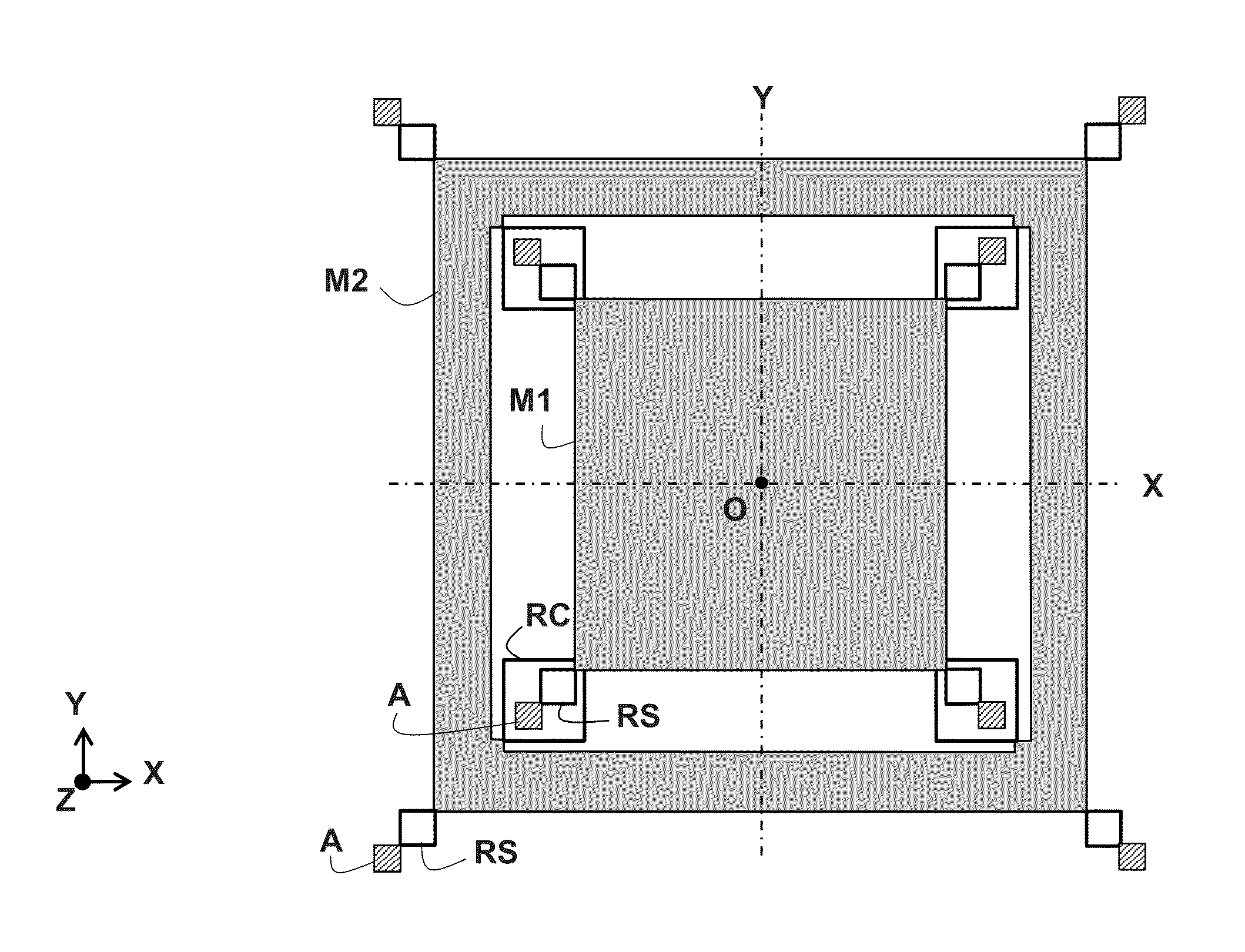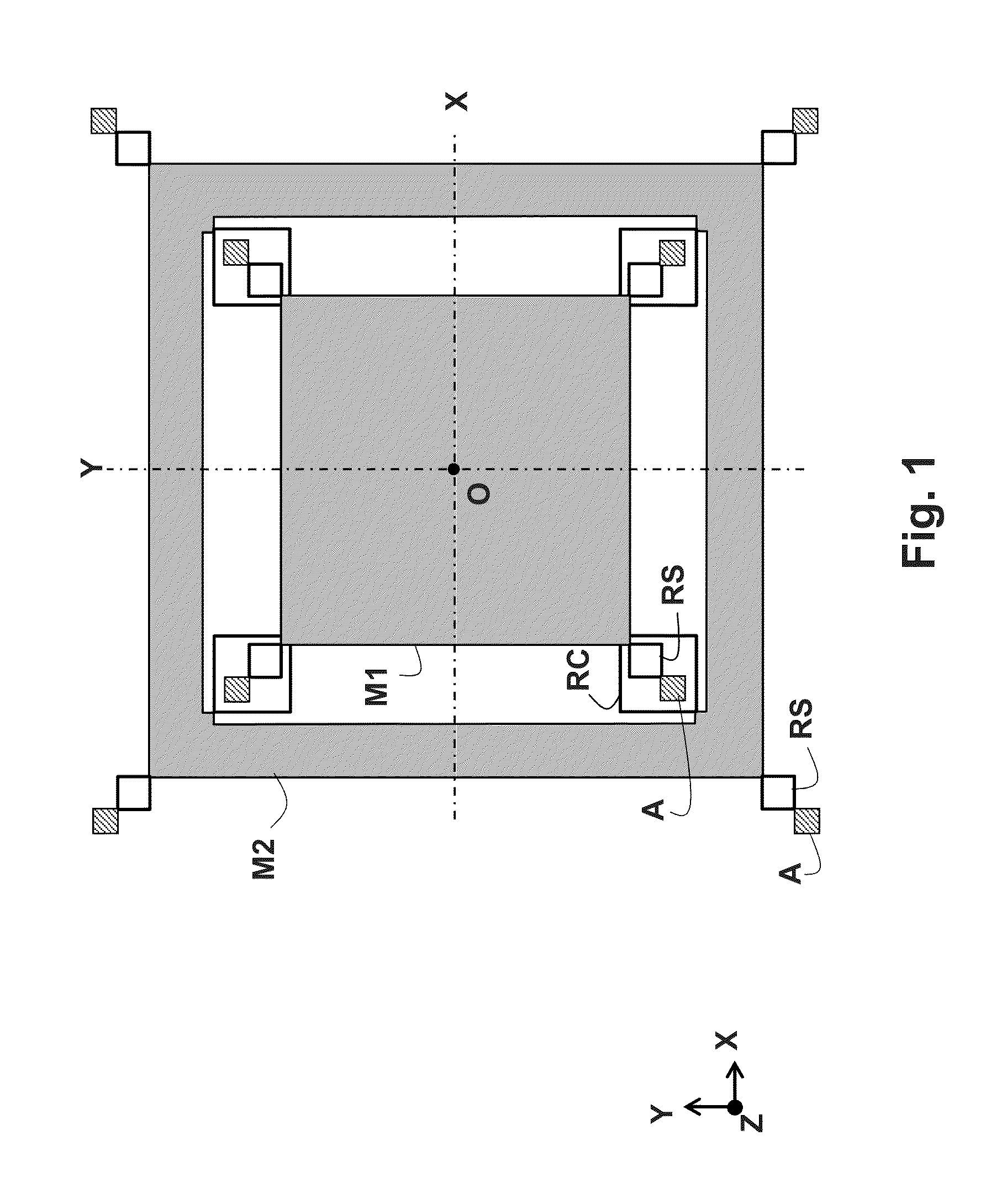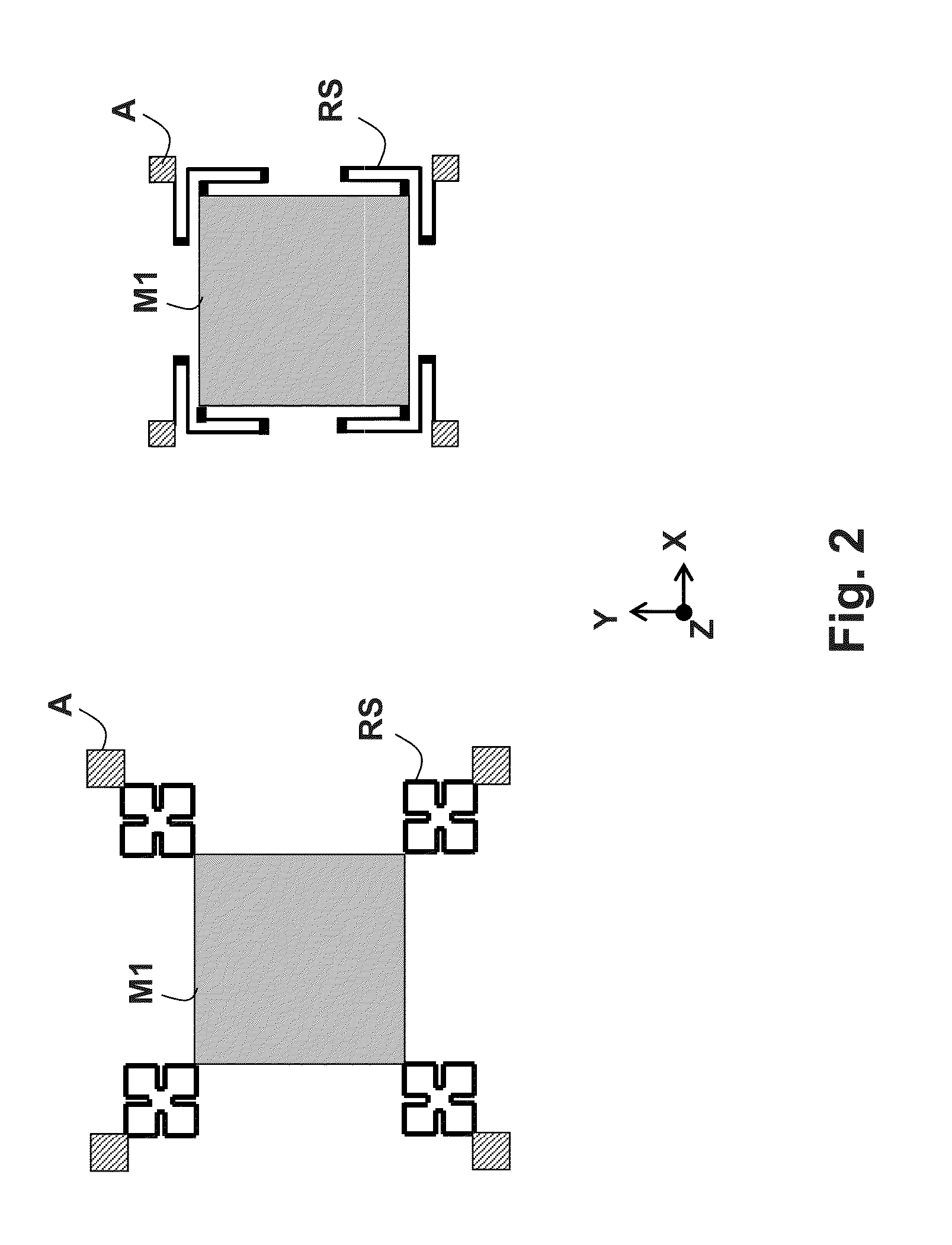MEMS angular inertial sensor operating in tuning fork mode
a technology of angular inertial sensor and tuning fork, which is applied in the direction of acceleration measurement using interia force, instruments, devices using electric/magnetic means, etc. it can solve the problems of energy loss persisting in such sensors and the performance of such sensors may be degraded, and achieve good separation and high coupling stiffness
- Summary
- Abstract
- Description
- Claims
- Application Information
AI Technical Summary
Benefits of technology
Problems solved by technology
Method used
Image
Examples
Embodiment Construction
[0068]The principles of fabrication of an MEMS inertial sensor are firstly briefly recalled: a thin silicon wafer is machined to make a gyrometer whose sensitive axis Z is perpendicular to the plane XY of the wafer and whose excitation and detection motions are situated in the plane of the wafer.
[0069]Silicon is chosen as preferential material, on the one hand for its mechanical properties and on the other hand for its high conductivity when it is sufficiently doped with an appropriate impurity (boron in general for silicon of type P). The conducting silicon makes it possible to carry out the electrical functions of the sensor, notably the electromechanical transduction functions which are generally carried out by electrodes as interdigitated capacitive combs energized with electrical current or voltage; the teeth of these combs, machined directly in the conducting silicon, serve as plate of capacitors useful for the excitation functions and for the detection functions.
[0070]The thi...
PUM
 Login to View More
Login to View More Abstract
Description
Claims
Application Information
 Login to View More
Login to View More - R&D
- Intellectual Property
- Life Sciences
- Materials
- Tech Scout
- Unparalleled Data Quality
- Higher Quality Content
- 60% Fewer Hallucinations
Browse by: Latest US Patents, China's latest patents, Technical Efficacy Thesaurus, Application Domain, Technology Topic, Popular Technical Reports.
© 2025 PatSnap. All rights reserved.Legal|Privacy policy|Modern Slavery Act Transparency Statement|Sitemap|About US| Contact US: help@patsnap.com



